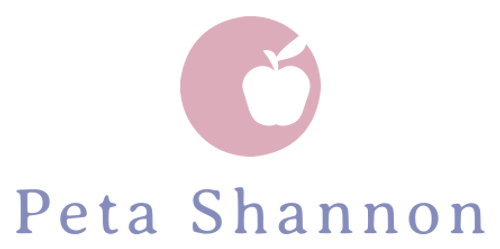top of page

Peta Shannon

TEACHER PHILOSOPHY STATEMENT
My educational purpose is to awaken students’ curiosity through encountering endless possibilities to discover who they are as individuals and their purpose for the future. I inspire learners to understand our common humanity and how to connect with others to manifest positive change in society. I achieve this through empowering students to take ownership of their learning, collaborate with others and build their capabilities. I bring a wealth of industry and teaching experience that will attribute to prepare students for lifelong success.
I build strong relationships with my students through understanding and respecting all their cultures, backgrounds, interests, religions and needs. I ensure all feel seen, valued and empowered to succeed (Department for Education, 2019). Safe and supportive learning environments are created so students feel confident to take risks, explore identity and engage critically with culture and social issues. This builds students’ resilience and empathy for others (Department for Education, 2019).
A safe learning environment is created through effective classroom management where all students have the right to learn and the opportunity to succeed (Drew, C, 2024). I establish clear expectations, structured routines, positive reinforcement and model behaviours that inspire respect, responsibility and self-motivation (AITSL, 2011).
My teaching approach is student-centred and scaffolded, employing trauma-informed practice, Universal Design for Learning and other strategies such as “I Do, We Do, You Do”. Through these strategies, tasks are broken down into achievable steps and differentiated to support all diverse learning needs (TfEL Framework, 2012).
In meeting students where they are at, I use diagnostic assessments to gauge students’ readiness for learning. In ensuring students are meeting assessment criteria, I offer consistent formative feedback, facilitate peer reviews, and encourage self-reflection. This encourages students to persistently recognise their progress and identify next steps (AITSL, 2011). I design summative tasks that can be modified to challenge students at their learning level, ensuring fairness, inclusivity and opportunities for achievement across diverse learning needs (ACARA, 2014).
The learning journey is fair and reciprocal. Angela Schwindt once said, “While we try to teach our children all about life, our children teach us what life is all about,” (as cited in Canfield et al., 2010). I learn from my students, they learn from me, and we all learn from each other. I continuously strive to improve my teaching through self-reflection and professional learning. This ensures I remain compassionate and responsive to students evolving needs and that content remains relevant with real-world concepts a priority (Churchill et al., 2025).
Content is relevant and in alignment with ACARA, SACE or IB curriculums, including general capabilities. I incorporate truth-telling and cultural respect in all aspects of my teaching, respectfully acknowledging the traditional custodians of the lands in which I teach (Aboriginal Education Strategy, Department for Education, 2019). Literacy and numeracy are embedded in all subjects whilst personal and social and ethical understandings are continuously learnt through collaboration, comprehension, critical thinking and self-reflection. Preparing students for a rapidly changing word, I integrate technology in lessons, encouraging critical thinking, cyber safety and multimodal expression to build digital literacy skills (Education Council, 2019). I actively seek new technologies that are relevant, challenge students’ capabilities and support their learning.
I have an honest, professional and nurturing approach, actively listening and engaging with students, families and colleagues, building mutual respect and authentic connections. Theodore Roosevelt once said, “[Young] people don’t care how much you know until they know how much you care,” (as cited in Quote Investigator, 2024). Once students feel genuinely cared for, they engage deeply and strive to meet high expectations (Churchill et al., 2025). Similarly, I consistently communicate with families and staff to ensure they are involved meaningfully in the students’ learning journey (AITSL, 2011).
In conclusion, teaching is more than a vocation; it is my life’s purpose. I am committed to inspire learners, to build their confidence and curiosity to pursue dreams and find their common humanity to make the world a better place.
References
-
ACARA. (2014) Australian Curriculum.
-
Australian Institute for Teaching and School Leadership (AITSL). (2011). Australian Professional Standards for Teachers
-
Canfield, J., Hansen, M & Dickson, M (2010). Chicken Soup for the Soul: Indian Teachers. Paperback
-
Churchill, R., Apps, T., Beckman, K., Grainger, P., Keddie, A., Letts, W., Mackay, J., Gill, M., Moss, J., Nagel, M.C., Shaw, K., & Rogers, J. (2025). Teaching: Making a Difference (6th ed.) Wiley.
-
Department for Education (2019). Aboriginal Education Strategy 2019-2029.
-
Department for Education. (n.d.). Teacher Performance and Development Framework.
-
Drew, C (2024). 11 Key Features of Assertive Discipline Theory (Helpful Professor. (2024). https://helpfulprofessor.com/assertive-discipline/
-
Government Department of Education (2019). Alice Springs (Mparntwe) Education Declaration.
-
Quote Investigator (2024). People don’t care how much you know until they know how much you care. https://quoteinvestigator.com/2024/07/04/know-care/
-
South Australian Department for Education. (n.d.). Teaching for Effective Learning (TfEL) Framework Guide

bottom of page

